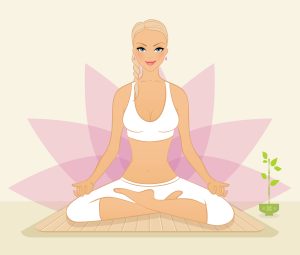By – James M. Katz, BA
In the evolving landscape of wellness and mental health, the role of a certified meditation instructor has become increasingly significant. As individuals seek ways to manage stress, enhance mindfulness, and foster personal growth, the demand for skilled meditation teachers has surged. Embarking on a journey to become a certified meditation instructor not just opens pathways to personal enlightenment but also empowers one to guide others through the transformative practice of meditation. Understanding meditation techniques, the subtleties of teaching meditation, and the intricacies of mindfulness teacher training is crucial in this profession. Equipped with the right knowledge and skills, certified meditation instructors stand at the forefront of promoting mental well-being and spiritual health in communities worldwide.
This article will delve into the essential attributes and skills required for success as a meditation instructor, covering the foundations of consistent practice, the art of presence and mindful teaching, and strategies for knowledge expansion. It will outline the mastery of teaching skills that elevate a meditation teacher’s ability to connect with and inspire their students. Moreover, it discusses the importance of boosting teacher confidence, creating a supportive network, professional career management, and the value of ongoing learning and growth in the field. Whether one is exploring how to become a meditation teacher, seeking meditation instructor certification, or aiming to enhance their competence in meditation teaching, this comprehensive guide serves as a valuable roadmap towards achieving excellence and impact as a certified meditation instructor.
Consistent Practice Foundations
Daily Commitment
A cornerstone of becoming a proficient meditation instructor is the commitment to daily practice. It is emphasized that meditation works best when practiced consistently, as this allows for an intimate observation of the mind, helping to rewire neural pathways for new ways of thinking, feeling, and behaving. For instructors, it’s crucial to lead by example, demonstrating the benefits of regular practice not just in theory but in personal habit. Just as one wouldn’t take guitar lessons from someone who never plays, one shouldn’t teach meditation without a personal, committed practice.
Testing Various Practices
In addition to regular practice, meditation instructors should explore a variety of meditation techniques and teaching methods. This not only deepens their own practice but also equips them to better guide their students, especially beginners. Understanding different meditation practices and their benefits allows instructors to tailor their teachings to meet the diverse needs and preferences of their students.
Instructors are encouraged to complement their practice with continuous learning—reading, watching, listening, and discussing meditation with peers. This broad approach helps in understanding various perspectives, which is essential when addressing the unique experiences of each student.
By maintaining a solid foundation of consistent practice and exploring various meditation techniques, instructors can ensure they are well-prepared to teach and inspire others effectively.
Presence and Mindful Teaching
Integrating Mindfulness
In the realm of meditation instruction, the integration of mindfulness into teaching practices is not just beneficial but essential. Educators have observed that children learn best in environments where they feel safe, comfortable, and relaxed. By incorporating mindfulness, instructors can create a learning atmosphere that fosters these feelings, making it easier for students to absorb and retain information. Mindful teaching involves using techniques such as mindful breathing, where one places their hands on their belly and chest to feel the rise and fall of their breath, which can be practiced alone or introduced to students. This practice not only aids in personal mindfulness but also sets a precedent for students, teaching them to live in the present and appreciate the moment.
Furthermore, sensory experiences play a crucial role in mindfulness. Instructors can employ methods like listening to calming sounds or engaging students with sensory tables filled with varied textures such as sand or ice. These activities help students focus and relax, enhancing their overall learning experience. Guided imagery is another effective tool, where students are led through imaginative journeys related to the curriculum, thereby integrating learning with relaxation.
Building Compassionate Connections
The development of compassion within the teaching framework significantly enhances the effectiveness of a meditation instructor. Compassion meditation practices encourage individuals to extend kindness not only towards loved ones but also towards themselves and even individuals they may not favor. This practice is crucial for instructors as it fosters an environment of empathy and understanding, which can transform educational settings. By regularly engaging in compassion meditation, instructors can better manage classroom dynamics and support students in developing stronger, more positive relationships.
Moreover, programs like Compassion Cultivation Training (CCT) and Cognitively-Based Compassion Training (CBCT) are designed to integrate these practices into educational settings, promoting well-being and emotional resilience among students and instructors alike. These programs provide structured approaches to fostering compassion, which can be particularly beneficial in challenging or diverse learning environments.
Instructors who embody these mindfulness and compassion practices not only enhance their teaching capabilities but also contribute to a more harmonious and productive educational atmosphere. By focusing on the present and fostering empathetic connections, they equip their students with valuable life skills that extend beyond the classroom.
Knowledge Expansion Strategies
Understanding Global Techniques
In the journey to becoming a certified meditation instructor, one must embrace a diverse array of global meditation practices. The study of various traditions such as Vedic knowledge, yoga, Ayurveda, Buddhism, Zen Buddhism, Taoism, and other Eastern practices including Qi-Gong, Tai Chi, and karate enriches an instructor’s understanding and ability to teach effectively . Additionally, exploring modern scientific disciplines such as neuroscience and philosophy supports the deepening of personal practices and teaching methods. This broad spectrum of knowledge allows instructors to offer a well-rounded and deeply informed experience to their students, catering to a wide range of cultural and individual preferences.
Application to Different Contexts
The ability to adapt meditation teachings to various settings is crucial for a meditation instructor. Whether conducting sessions online or in person, understanding how to create the optimal environment for meditation is key. This includes choosing the appropriate meditation technique based on the setting and the needs of the students. For instance, choosing between guided and unguided meditations https://www.headspace.com/meditation/techniques can significantly impact the effectiveness of the learning experience, especially for beginners. Instructors must also be adept at integrating meditation with digital platforms, effectively marketing their sessions, and engaging students in a way that resonates with modern lifestyles. This adaptability not only enhances the learning experience but also ensures that the teachings are accessible and relevant to a diverse audience.
Teaching Skills Mastery
Creating Effective Sessions
In the realm of meditation teaching, the ability to lead a meditation session is invaluable, especially in group settings. As a certified meditation instructor, one must ensure the meditation environment is correctly set up, fostering a space where participants feel safe and engaged. Preparing before the group gathers can help address potential issues and align the session’s goals with the group’s needs. Incorporating elements like relevant quotes or personal stories before beginning the meditation can capture the group’s attention and deepen the meditation experience. Additionally, selecting appropriate background music can aid in focusing the participants’ minds and masking external distractions, creating a seamless and immersive experience.
Student Engagement and Retention
Engagement and retention are crucial for the success of any educational program, including meditation. Techniques to enhance engagement in mindfulness programs include regular meditation, daily awareness exercises, and the integration of intention, motivation, and commitment to practice. These elements are vital for maintaining participant interest and ensuring consistent practice, which is essential for the benefits of meditation to manifest. Furthermore, instructors can utilize behavior change techniques like notifications and tracking to improve engagement and adherence to the program. Studies have shown that these strategies can significantly impact participants’ continued participation and overall satisfaction with the program.
To effectively manage and enhance student engagement, instructors should also consider the design and features of their teaching platforms. Utilizing a variety of formats, such as video and interactive visuals, can make the learning experience more dynamic and appealing. For web-based programs, features like asynchronous emails and automated reminders can serve as additional tools to encourage consistent participation and support students in their meditation journey.
By focusing on these strategies, instructors can not only improve their teaching skills but also significantly impact their students’ learning experiences, leading to higher retention rates and more profound learning outcomes.
Boosting Teacher Confidence
Dealing with Insecurities
In the pursuit of becoming a certified meditation instructor, confronting and overcoming personal insecurities is a crucial step. It is often observed that insecurity stems from perceiving oneself through the critical lens of society, which fosters comparisons and self-doubt. By shifting focus from societal expectations to personal growth and self-acceptance, instructors can cultivate a more secure and confident demeanor. Embracing spirituality and mindfulness can significantly aid this transformation by allowing one to view themselves with compassion and appreciation. This internal security is essential for instructors to effectively lead and inspire their students.
Gathering Positive Feedback
Positive feedback from students and clients plays a significant role in boosting an instructor’s confidence. For instance, participants in various mindfulness and meditation sessions have reported profound improvements in their emotional and physical well-being, which in turn validates the effectiveness of the instructor’s teaching methods. Feedback such as finding sessions “easy to follow” and “effective” or experiencing significant emotional coaching alongside meditation training underscores the impact of well-executed instruction. Moreover, witnessing firsthand the benefits that students gain, such as increased peace, contentment, and even physical pain relief during sessions, provides tangible proof of the positive influence instructors have on their students.
By continuously engaging in self-improvement and actively seeking constructive feedback, certified meditation instructors can not only enhance their teaching skills but also reinforce their confidence, ensuring they provide the highest quality guidance to their students.
Creating a Supportive Network
Joining Professional Groups
Joining professional meditation groups offers numerous benefits for both novice and experienced meditation instructors. It provides a platform where individuals can connect face-to-face, fostering genuine relationships that are often more profound than those formed through digital means. These groups create a unique environment where members can share their experiences and insights, which is invaluable for personal and professional growth. The synchronization of brainwaves during group meditation sessions can lead to a deeper collective meditation experience, enhancing each member’s practice.
Moreover, being part of a meditation group can serve as a motivational force, encouraging consistent practice. It’s similar to the way group fitness classes motivate participants; the collective energy of the group can help sustain individual commitment to meditation. For those new to meditation, the support from group members can be particularly beneficial, providing guidance and clarity on various meditation practices and addressing common challenges encountered during the practice.
Encouraging Collaborative Growth
Meditation communities not only support individual practice but also promote collaborative growth. These communities are often diverse, bringing together people from various backgrounds and with different levels of experience. This diversity enriches the group by introducing a variety of meditation techniques and perspectives, thereby broadening each member’s understanding and approach to meditation.
Collaborative growth is further supported through shared experiences and challenges within the community. This shared journey fosters a sense of camaraderie and accountability, which are crucial for deepening the practice and maintaining regular meditation sessions. Additionally, the emotional support provided by the community can enhance members’ emotional health, increase empathy, and create a nurturing space that supports each individual’s meditation journey.
The presence of a supportive network also offers a collective reservoir of wisdom and emotional support, which can be particularly helpful in navigating personal challenges and enhancing resilience. By joining an online meditation community, individuals gain the flexibility to connect with others globally, benefiting from a diverse range of perspectives and experiences that can significantly enrich their practice.
Professional Career Management
In the pursuit of becoming a certified meditation instructor, managing one’s professional career effectively is crucial. This involves not only honing one’s skills and knowledge but also leveraging modern tools such as social media to enhance reach and engagement.
Building a Practice
Establishing a sustainable meditation practice is fundamental for a meditation instructor. It’s recommended to start with a manageable amount of time each day, gradually increasing as one becomes more comfortable and confident in their practice. The key is consistency, as daily practice builds the foundation of both personal and professional growth in meditation. Establishing habits around meditation, such as having a specific time and place for practice, can significantly aid in maintaining consistency. Additionally, extending mindfulness into everyday activities helps integrate meditation more deeply into one’s lifestyle, enhancing both personal well-being and professional credibility.
Utilizing Social Media
Social media is a powerful tool for meditation instructors to expand their reach and connect with a broader audience. By sharing authentic, heart-centered posts, instructors can attract and engage with their ideal clients. Platforms like Facebook, Instagram, and YouTube are particularly effective for meditation instructors to showcase their expertise and build a community. Including social media icons and links in email campaigns can further amplify this reach, encouraging recipients to engage with the instructor’s content on these platforms.
Moreover, social media analytics provide valuable insights into audience engagement and preferences, allowing instructors to tailor their content and interactions to better meet the needs of their followers . This real-time interaction not only enhances the instructor’s visibility but also fosters a stronger, more personal connection with their audience, which is essential for building trust and credibility as a certified meditation instructor. By effectively managing their professional career through these strategies, meditation instructors can ensure a more impactful and fulfilling practice, reaching and inspiring a global audience.
Ongoing Learning and Growth
Attending New Trainings
For certified meditation instructors, attending new trainings is not just beneficial; it’s essential for deepening their practice and enhancing their teaching skills. Engaging in meditation workshops and retreats provides a controlled and guided environment, which is crucial for developing a more profound connection with meditation practices. These settings allow instructors to learn from experienced mentors who are well-versed in various meditation techniques. By participating in these structured programs, instructors not only gain new skills but also have the opportunity to earn certifications that can further validate their expertise and commitment to their practice. Workshops and retreats are also valuable for the unique opportunity they provide to disconnect from daily distractions. This focused environment supports personal development and helps practitioners deepen their understanding of meditation by exploring new techniques and approaches under the guidance of seasoned educators.
Engaging with New Research
Staying updated with the latest research in meditation and mindfulness is crucial for instructors who wish to maintain relevance and effectiveness in their teaching. Research like that conducted by Desbordes shows that meditation can create lasting changes in brain activity, which are evident even when individuals are not actively meditating. This kind of insight is vital for instructors to understand and convey the profound impacts of consistent meditation practice on the brain, particularly in areas like the amygdala, which affects emotional processing.
Moreover, engaging with new studies helps instructors apply scientific findings to their teaching strategies. For example, mindfulness training has been shown to enhance attention and emotion regulation through sustained engagement of self-regulatory neural circuits in the prefrontal cortex. By integrating such knowledge into their programs, meditation teachers can offer more effective and scientifically-backed sessions that cater to the needs of their students, ensuring both the credibility and the effectiveness of their teaching methods.
Instructors can also benefit from understanding the specific effects of meditation on different populations, such as clinically depressed patients. Studies have indicated that mindfulness-based cognitive therapy can significantly aid in managing depression, providing a strong basis for instructors to tailor their approaches when working with this group. By continuously engaging with new trainings and research, certified meditation instructors can ensure that their practice and teaching methods remain at the forefront of the field, thereby providing the best possible guidance and support to their students.
Conclusion
The journey of becoming a certified meditation instructor encompasses a holistic development of personal practice, teaching skills, and professional growth, essential for guiding others through the peaceful realms of mindfulness and meditation. This article has outlined the pivotal steps and skills required, including consistent practice, integration of mindfulness in teaching, expanding knowledge on global techniques, and mastering the art of engaging and retaining students. Central to this is the commitment to ongoing learning and personal growth, which not only enhances an instructor’s competence but also enriches the lives of those they teach, fostering a culture of mindfulness that transcends the confines of the meditation class.
In essence, the role of a certified meditation instructors is instrumental in advancing mental well-being and spiritual health within communities, acting as pillars of resilience, understanding, and compassion. Encouraging further research and participation in professional networks, the article highlights the importance of a supportive community in this journey, underlining the significant impact of meditation both as a personal practice and a shared experience. As the field of wellness continues to evolve, so too does the opportunity for meditation instructors to deepen their impact, embodying the transformative power of mindfulness in fostering a more present, aware, and compassionate society.
Becoming a Certified Meditation Instructor can be done online through our Meditation Instructor Certification Program. Our program consists of 6 online meditation courses which can lead to a certification in Meditation Instruction. For more detail, please visit our program here
Research Articles:
Green AA, Kinchen EV. The Effects of Mindfulness Meditation on Stress and Burnout in Nurses. Journal of Holistic Nursing. 2021;39(4):356-368.
Access link here
Taylor, G.B., Vasquez, T.S., Kastrinos, A. et al. The Adverse Effects of Meditation-Interventions and Mind–Body Practices: a Systematic Review. Mindfulness 13, 1839–1856 (2022).
Access link here
Britton, W. B., Lindahl, J. R., Cooper, D. J., Canby, N. K., & Palitsky, R. (2021). Defining and Measuring Meditation-Related Adverse Effects in Mindfulness-Based Programs. Clinical Psychological Science, 9(6), 1185-1204.
Access link here
Hunkin, H., King, D.L. & Zajac, I.T. EEG Neurofeedback During Focused Attention Meditation: Effects on State Mindfulness and Meditation Experiences. Mindfulness 12, 841–851 (2021).
Access link here
















